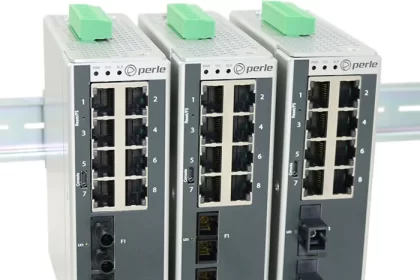Artificial Intelligence (AI) and the Internet of Things (IoT) are influential technologies in their very own way. When AI and IoT are combined, you get AIoT- the artificial intelligence of things. You can think of the internet of things devices like the digital nervous system while the brain of a system is artificial intelligence.
What is an AIoT?
To understand AIoT entirely, you need to start with the internet of things. You have the internet of things when “things” such as wearable devices, refrigerators, digital assistants, sensors, and other devices are connected to the internet, and other devices can be identified and collected and processed. AI is when a system can complete a set of tasks or learn from the data in a manner that seems smart. Consequently, when artificial intelligence is added to the internet of things, it means that these devices can inspect data and make decisions and act on that data without human involvement.
These devices are “smart,” and they help drive efficiency and effectiveness. AIoT’s intelligence enables data analytics that is then used to automate a system and produce higher efficiency and business insights, and create data that helps make better decisions and allows the system to learn from it.
Practical Instances of AIoT
The combination of the IoT and smart systems makes AIoT an essential and powerful tool for many applications. Here are a few:
Smart Retail
A camera system equipped with computer vision capabilities in an intelligent retail setting will use facial recognition to recognize customers as they step through the gates. The system gathers intel about clients, including their gender, product preferences, traffic flow, and much more, analyzes data to predict consumer behavior accurately, and then uses that data to make better about store functionings from marketing to product placement and other decisions. For instance, if the system senses that the majority of customers coming into the store are Millennials, it may push out product ads or in-store promotions that cater to that demographic, thereby driving up sales. Smart cameras will be able to identify shoppers and encourage them to skip the checkout as they do in the Amazon Go store.
Traffic Monitoring by Drone
Several practical uses of AIoT exist in a smart city, including drones’ traffic monitoring. If traffic can be observed in real-time, and traffic flow adjustments can be made, congestion can be reduced. When drones are stationed to monitor a large area, they can transmit traffic data, and then AI can analyze the data and decide how best to mitigate traffic congestion with habituations to speed limits and timing of traffic lights without involving people.
Office Buildings
Another field where AI intersects with the IoT is in smart office buildings. Some companies chose to install a smart environmental sensor network in their office building. These sensors can detect which personnel are present and adjust temperatures and lighting to improve energy efficiency accordingly. In other use cases, a smart building can use facial recognition technology to control access to buildings. AIoT at work is the combination of connected cameras and artificial intelligence that can compare images taken in real-time to a database to determine who should be given access to a building. Similarly, employees will not have to clock in or attend mandatory meetings would not have to be held because the AIoT program is taking care of it.
Fleet Management and Autonomous Vehicles
In fleet management today, AIoT is used to help monitor vehicles in a fleet, reducing fuel costs, tracking vehicle maintenance, and recognizing unsafe driving behavior. Thanks to AIoT, companies can better manage their fleet through IoT devices such as GPS and other sensors and an artificial intelligence system. Another way AIoT is utilized today is with autonomous vehicles like Tesla’s autopilot systems that use radars, sonars, GPS, and cameras to collect data about traffic habits and then an AI system to make decisions about the data that the devices are collecting from the internet.
Autonomous Delivery Robots
Autonomous delivery robots are another example of AIoT in action, similar to how AIoT is used with autonomous vehicles. Robots are equipped with sensors that gather information about the robot’s environment and then make moment-to-moment decisions about how to react via its on-board AI platform.









